Chang Su
In vivo 3D ultrasound computed tomography of musculoskeletal tissues with generative neural physics
Aug 17, 2025Abstract:Ultrasound computed tomography (USCT) is a radiation-free, high-resolution modality but remains limited for musculoskeletal imaging due to conventional ray-based reconstructions that neglect strong scattering. We propose a generative neural physics framework that couples generative networks with physics-informed neural simulation for fast, high-fidelity 3D USCT. By learning a compact surrogate of ultrasonic wave propagation from only dozens of cross-modality images, our method merges the accuracy of wave modeling with the efficiency and stability of deep learning. This enables accurate quantitative imaging of in vivo musculoskeletal tissues, producing spatial maps of acoustic properties beyond reflection-mode images. On synthetic and in vivo data (breast, arm, leg), we reconstruct 3D maps of tissue parameters in under ten minutes, with sensitivity to biomechanical properties in muscle and bone and resolution comparable to MRI. By overcoming computational bottlenecks in strongly scattering regimes, this approach advances USCT toward routine clinical assessment of musculoskeletal disease.
X-MoGen: Unified Motion Generation across Humans and Animals
Aug 07, 2025Abstract:Text-driven motion generation has attracted increasing attention due to its broad applications in virtual reality, animation, and robotics. While existing methods typically model human and animal motion separately, a joint cross-species approach offers key advantages, such as a unified representation and improved generalization. However, morphological differences across species remain a key challenge, often compromising motion plausibility. To address this, we propose \textbf{X-MoGen}, the first unified framework for cross-species text-driven motion generation covering both humans and animals. X-MoGen adopts a two-stage architecture. First, a conditional graph variational autoencoder learns canonical T-pose priors, while an autoencoder encodes motion into a shared latent space regularized by morphological loss. In the second stage, we perform masked motion modeling to generate motion embeddings conditioned on textual descriptions. During training, a morphological consistency module is employed to promote skeletal plausibility across species. To support unified modeling, we construct \textbf{UniMo4D}, a large-scale dataset of 115 species and 119k motion sequences, which integrates human and animal motions under a shared skeletal topology for joint training. Extensive experiments on UniMo4D demonstrate that X-MoGen outperforms state-of-the-art methods on both seen and unseen species.
MIDB: Multilingual Instruction Data Booster for Enhancing Multilingual Instruction Synthesis
May 23, 2025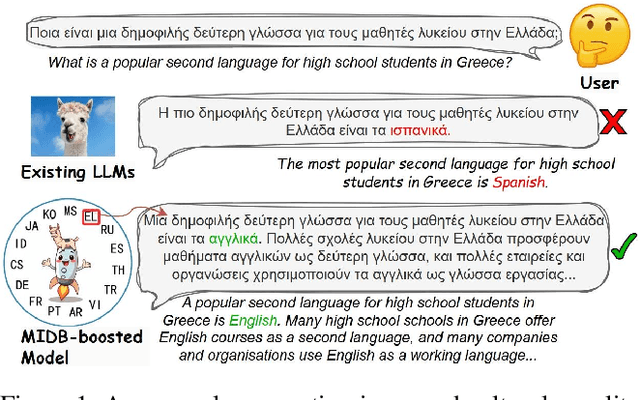
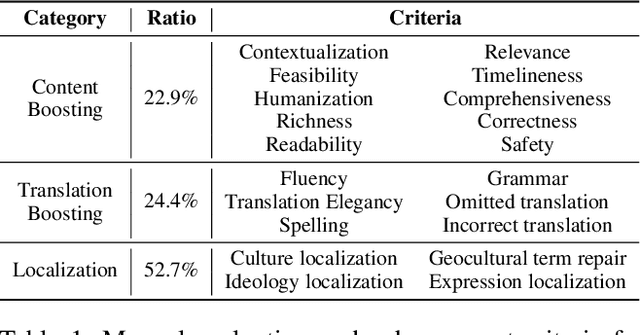
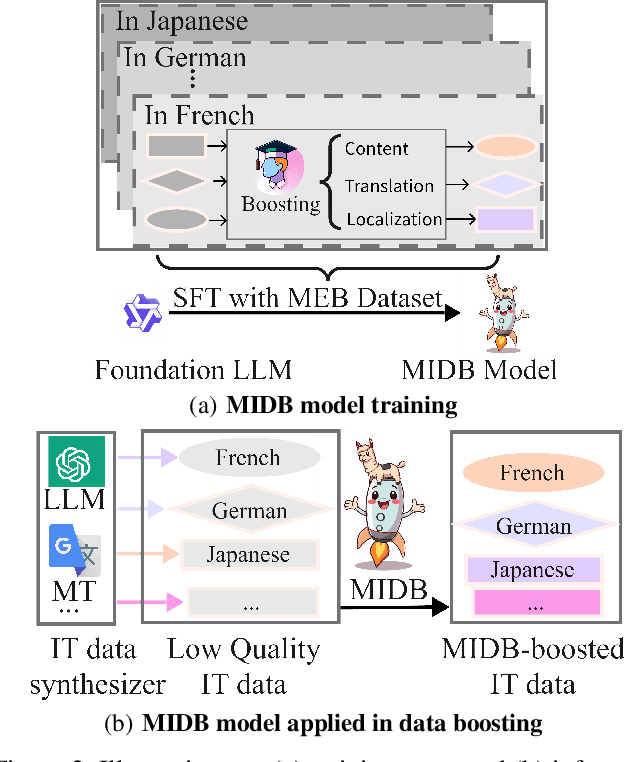
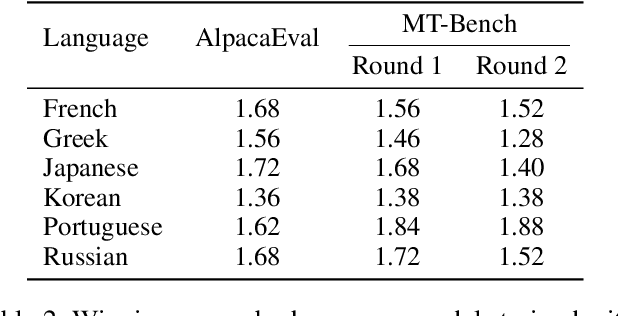
Abstract:Despite doubts on data quality, instruction synthesis has been widely applied into instruction tuning (IT) of LLMs as an economic and rapid alternative. Recent endeavors focus on improving data quality for synthesized instruction pairs in English and have facilitated IT of English-centric LLMs. However, data quality issues in multilingual synthesized instruction pairs are even more severe, since the common synthesizing practice is to translate English synthesized data into other languages using machine translation (MT). Besides the known content errors in these English synthesized data, multilingual synthesized instruction data are further exposed to defects introduced by MT and face insufficient localization of the target languages. In this paper, we propose MIDB, a Multilingual Instruction Data Booster to automatically address the quality issues in multilingual synthesized data. MIDB is trained on around 36.8k revision examples across 16 languages by human linguistic experts, thereby can boost the low-quality data by addressing content errors and MT defects, and improving localization in these synthesized data. Both automatic and human evaluation indicate that not only MIDB steadily improved instruction data quality in 16 languages, but also the instruction-following and cultural-understanding abilities of multilingual LLMs fine-tuned on MIDB-boosted data were significantly enhanced.
ELSPR: Evaluator LLM Training Data Self-Purification on Non-Transitive Preferences via Tournament Graph Reconstruction
May 23, 2025Abstract:Large language models (LLMs) are widely used as evaluators for open-ended tasks, while previous research has emphasized biases in LLM evaluations, the issue of non-transitivity in pairwise comparisons remains unresolved: non-transitive preferences for pairwise comparisons, where evaluators prefer A over B, B over C, but C over A. Our results suggest that low-quality training data may reduce the transitivity of preferences generated by the Evaluator LLM. To address this, We propose a graph-theoretic framework to analyze and mitigate this problem by modeling pairwise preferences as tournament graphs. We quantify non-transitivity and introduce directed graph structural entropy to measure the overall clarity of preferences. Our analysis reveals significant non-transitivity in advanced Evaluator LLMs (with Qwen2.5-Max exhibiting 67.96%), as well as high entropy values (0.8095 for Qwen2.5-Max), reflecting low overall clarity of preferences. To address this issue, we designed a filtering strategy, ELSPR, to eliminate preference data that induces non-transitivity, retaining only consistent and transitive preference data for model fine-tuning. Experiments demonstrate that models fine-tuned with filtered data reduce non-transitivity by 13.78% (from 64.28% to 50.50%), decrease structural entropy by 0.0879 (from 0.8113 to 0.7234), and align more closely with human evaluators (human agreement rate improves by 0.6% and Spearman correlation increases by 0.01).
Under-Sampled High-Dimensional Data Recovery via Symbiotic Multi-Prior Tensor Reconstruction
Apr 08, 2025Abstract:The advancement of sensing technology has driven the widespread application of high-dimensional data. However, issues such as missing entries during acquisition and transmission negatively impact the accuracy of subsequent tasks. Tensor reconstruction aims to recover the underlying complete data from under-sampled observed data by exploring prior information in high-dimensional data. However, due to insufficient exploration, reconstruction methods still face challenges when sampling rate is extremely low. This work proposes a tensor reconstruction method integrating multiple priors to comprehensively exploit the inherent structure of the data. Specifically, the method combines learnable tensor decomposition to enforce low-rank constraints of the reconstructed data, a pre-trained convolutional neural network for smoothing and denoising, and block-matching and 3D filtering regularization to enhance the non-local similarity in the reconstructed data. An alternating direction method of the multipliers algorithm is designed to decompose the resulting optimization problem into three subproblems for efficient resolution. Extensive experiments on color images, hyperspectral images, and grayscale videos datasets demonstrate the superiority of our method in extreme cases as compared with state-of-the-art methods.
SCOPE-DTI: Semi-Inductive Dataset Construction and Framework Optimization for Practical Usability Enhancement in Deep Learning-Based Drug Target Interaction Prediction
Mar 12, 2025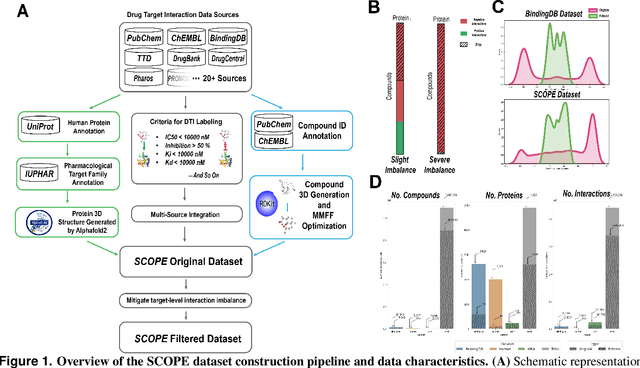

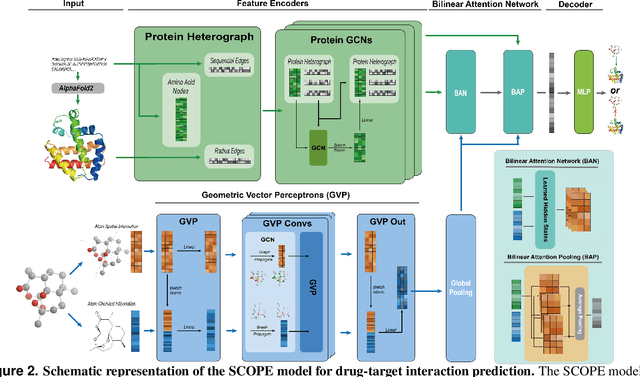
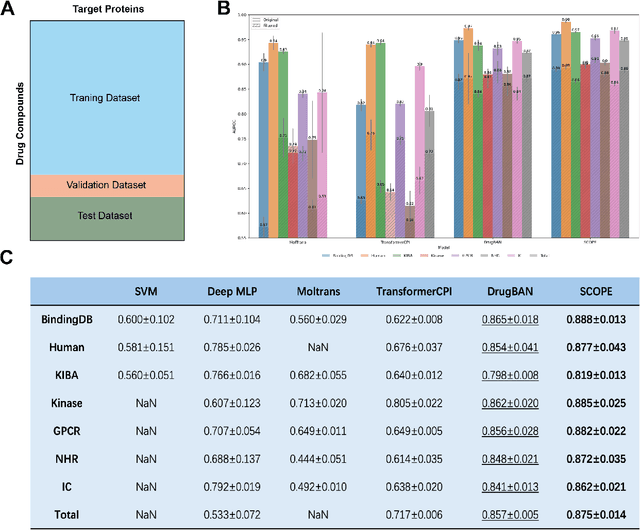
Abstract:Deep learning-based drug-target interaction (DTI) prediction methods have demonstrated strong performance; however, real-world applicability remains constrained by limited data diversity and modeling complexity. To address these challenges, we propose SCOPE-DTI, a unified framework combining a large-scale, balanced semi-inductive human DTI dataset with advanced deep learning modeling. Constructed from 13 public repositories, the SCOPE dataset expands data volume by up to 100-fold compared to common benchmarks such as the Human dataset. The SCOPE model integrates three-dimensional protein and compound representations, graph neural networks, and bilinear attention mechanisms to effectively capture cross domain interaction patterns, significantly outperforming state-of-the-art methods across various DTI prediction tasks. Additionally, SCOPE-DTI provides a user-friendly interface and database. We further validate its effectiveness by experimentally identifying anticancer targets of Ginsenoside Rh1. By offering comprehensive data, advanced modeling, and accessible tools, SCOPE-DTI accelerates drug discovery research.
R1-T1: Fully Incentivizing Translation Capability in LLMs via Reasoning Learning
Feb 27, 2025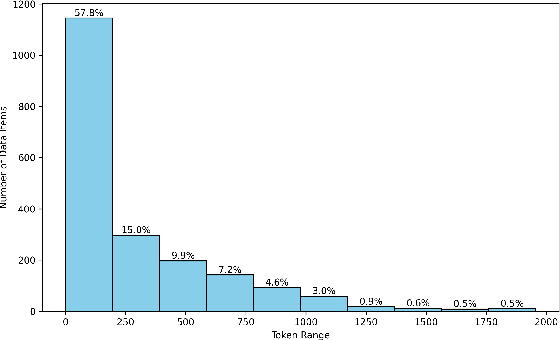



Abstract:Despite recent breakthroughs in reasoning-enhanced large language models (LLMs) like DeepSeek-R1, incorporating inference-time reasoning into machine translation (MT), where human translators naturally employ structured, multi-layered reasoning chain-of-thoughts (CoTs), is yet underexplored. Existing methods either design a fixed CoT tailored for a specific MT sub-task (e.g., literature translation), or rely on synthesizing CoTs unaligned with humans and supervised fine-tuning (SFT) prone to catastrophic forgetting, limiting their adaptability to diverse translation scenarios. This paper introduces R1-Translator (R1-T1), a novel framework to achieve inference-time reasoning for general MT via reinforcement learning (RL) with human-aligned CoTs comprising six common patterns. Our approach pioneers three innovations: (1) extending reasoning-based translation beyond MT sub-tasks to six languages and diverse tasks (e.g., legal/medical domain adaptation, idiom resolution); (2) formalizing six expert-curated CoT templates that mirror hybrid human strategies like context-aware paraphrasing and back translation; and (3) enabling self-evolving CoT discovery and anti-forgetting adaptation through RL with KL-constrained rewards. Experimental results indicate a steady translation performance improvement in 21 languages and 80 translation directions on Flores-101 test set, especially on the 15 languages unseen from training, with its general multilingual abilities preserved compared with plain SFT.
Model Predictive Control Enabled UAV Trajectory Optimization and Secure Resource Allocation
Nov 07, 2024



Abstract:In this paper, we investigate a secure communication architecture based on unmanned aerial vehicle (UAV), which enhances the security performance of the communication system through UAV trajectory optimization. We formulate a control problem of minimizing the UAV flight path and power consumption while maximizing secure communication rate over infinite horizon by jointly optimizing UAV trajectory, transmit beamforming vector, and artificial noise (AN) vector. Given the non-uniqueness of optimization objective and significant coupling of the optimization variables, the problem is a non-convex optimization problem which is difficult to solve directly. To address this complex issue, an alternating-iteration technique is employed to decouple the optimization variables. Specifically, the problem is divided into three subproblems, i.e., UAV trajectory, transmit beamforming vector, and AN vector, which are solved alternately. Additionally, considering the susceptibility of UAV trajectory to disturbances, the model predictive control (MPC) approach is applied to obtain UAV trajectory and enhance the system robustness. Numerical results demonstrate the superiority of the proposed optimization algorithm in maintaining accurate UAV trajectory and high secure communication rate compared with other benchmark schemes.
Enhancing SPARQL Generation by Triplet-order-sensitive Pre-training
Oct 08, 2024



Abstract:Semantic parsing that translates natural language queries to SPARQL is of great importance for Knowledge Graph Question Answering (KGQA) systems. Although pre-trained language models like T5 have achieved significant success in the Text-to-SPARQL task, their generated outputs still exhibit notable errors specific to the SPARQL language, such as triplet flips. To address this challenge and further improve the performance, we propose an additional pre-training stage with a new objective, Triplet Order Correction (TOC), along with the commonly used Masked Language Modeling (MLM), to collectively enhance the model's sensitivity to triplet order and SPARQL syntax. Our method achieves state-of-the-art performances on three widely-used benchmarks.
Why Not Transform Chat Large Language Models to Non-English?
May 22, 2024



Abstract:The scarcity of non-English data limits the development of non-English large language models (LLMs). Transforming English-centric LLMs to non-English has been identified as an effective and resource-efficient method. Previous works start from base LLMs and perform knowledge distillation (KD) with data generated by stronger LLMs, e.g. GPT-4. Compared to base LLMs, chat LLMs are further optimized for advanced abilities, e.g. multi-turn conversation and human preference alignment, and thus more powerful in both helpfulness and safety. However, transforming a chat LLM involves two critical issues: (1) How can we effectively transfer advanced abilities without their supervised data? (2) How can we prevent the original knowledge from catastrophic forgetting during transformation? We target these issues by introducing a simple framework called TransLLM. For the first issue, TransLLM divides the transfer problem into some common sub-tasks with the translation chain-of-thought, which uses the translation as the bridge between English and non-English step-by-step. We further enhance the performance of sub-tasks with publicly available data. For the second issue, we propose a method comprising two synergistic components: low-rank adaptation for training to maintain the original LLM parameters, and recovery KD, which utilizes data generated by the chat LLM itself to recover the original knowledge from the frozen parameters. In the experiments, we transform the LLaMA-2-chat-7B to the Thai language. Our method, using only single-turn data, outperforms strong baselines and ChatGPT on multi-turn benchmark MT-bench. Furthermore, our method, without safety data, rejects more harmful queries of safety benchmark AdvBench than both ChatGPT and GPT-4.
 Add to Chrome
Add to Chrome Add to Firefox
Add to Firefox Add to Edge
Add to Edge